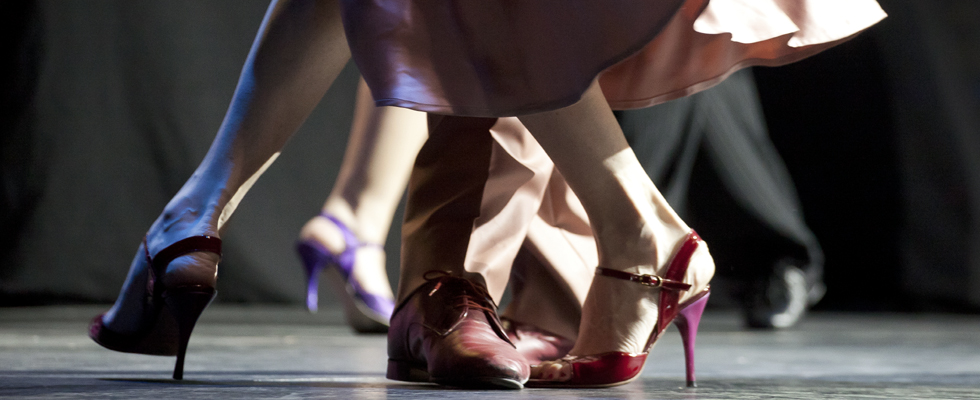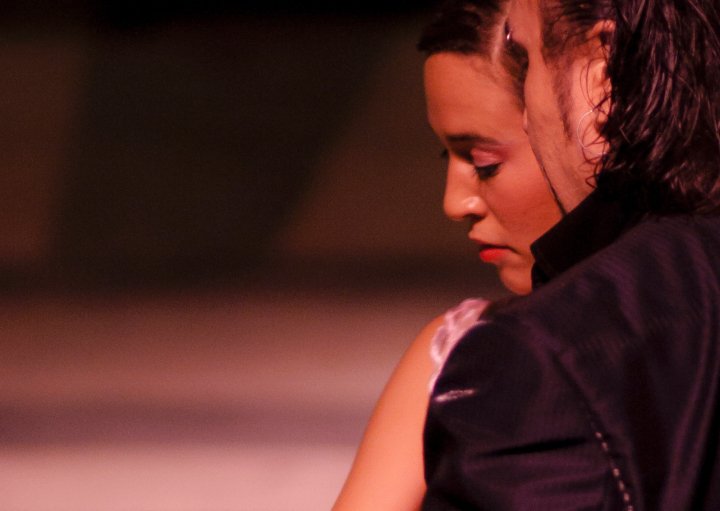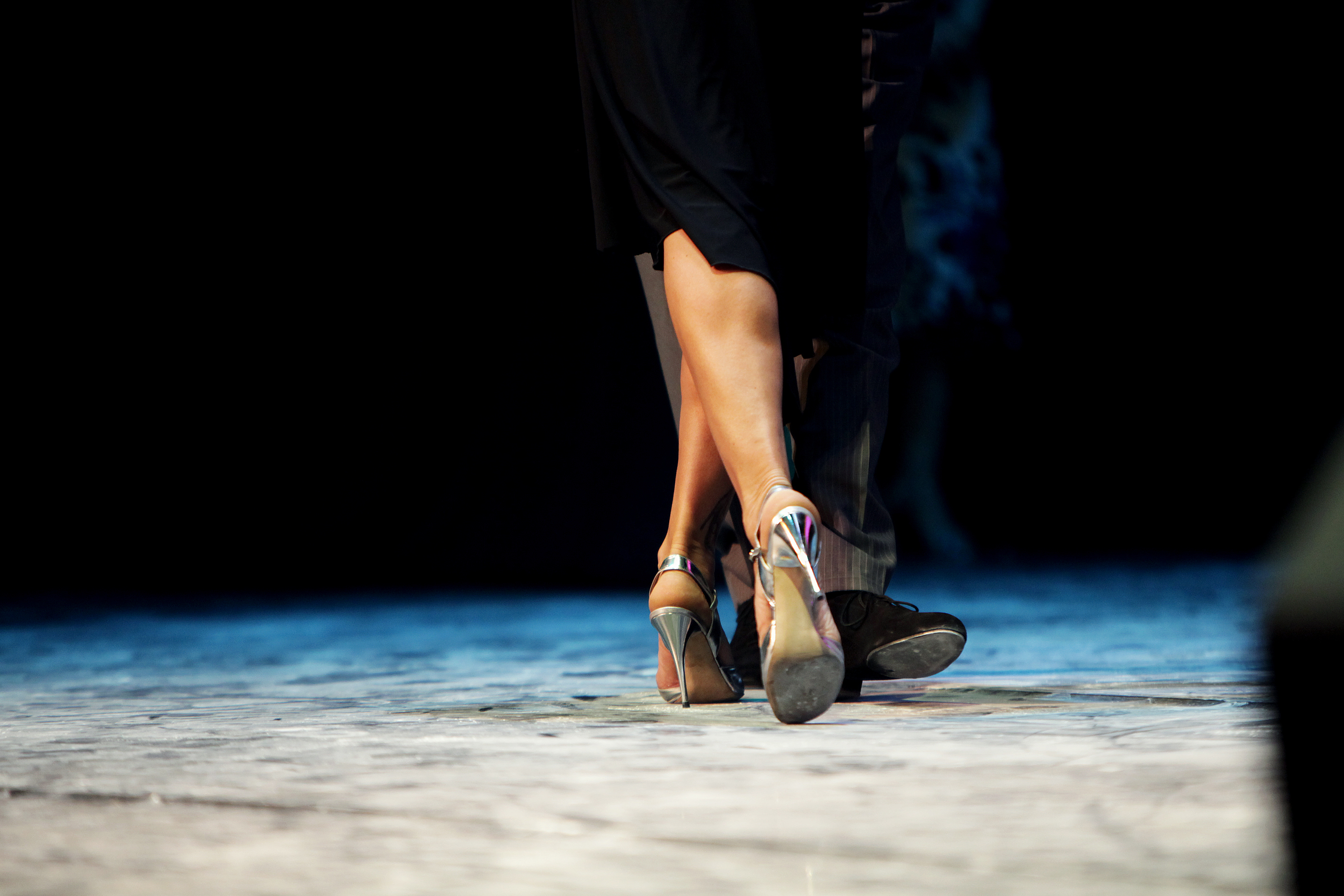
Tango!?
The special thing about Tango is the communication, the course of the dance is improvised. The couple is in dialogue and moves through space and music.
Walking and turning are the cornerstones, everything else is built on this. The subtle communication is already evident in the walking together, when the couple moves harmoniously and freely.
In the universe of tango there are numerous elements like barridas, boleos, paradas, sacadas and many more that help to give variation and expression to the dance.
But despite all the possibilities and variety, the essential is in the simple.
Short history…
The Tango argentino should actually be called Tango rioplatense, because the music as well as the dance originated and developed around the Rio de la Plata in Argentina and Uruguay. The main center was and is Buenos Aires.
The social (popular) dance experienced its zenith in the 40s. During this time there were numerous orchestras playing for the favor of the dancers night after night in the milongas. Even today, many dancers prefer to dance to recordings from this time.
With the advent of Rock ‘n’ Roll, the Tango was pushed to the edge and only rarely danced. The arrival of the dictatorship in Argentina also restricted life in the milongas of Buenos Aires.
Only at the end of the dictatorship did the Tango find its way back into the world via the stage. In 1983 the show “Tango Argentino” was premiered in Paris and a little later at the Broadway and made the Tango famous all over the world. For many of us, the first encounter with tango was via the stage. It is therefore not surprising that these images have shaped our conception of tango. The stage tango is choreographed and danced outwards, for the audience. The original tango, however, is a social dance in which the inner experience in the couple counts just as much as the image.
In the meantime the tango has spread all over the world. It is danced everywhere in local milongas, at marathons and international festivals.


